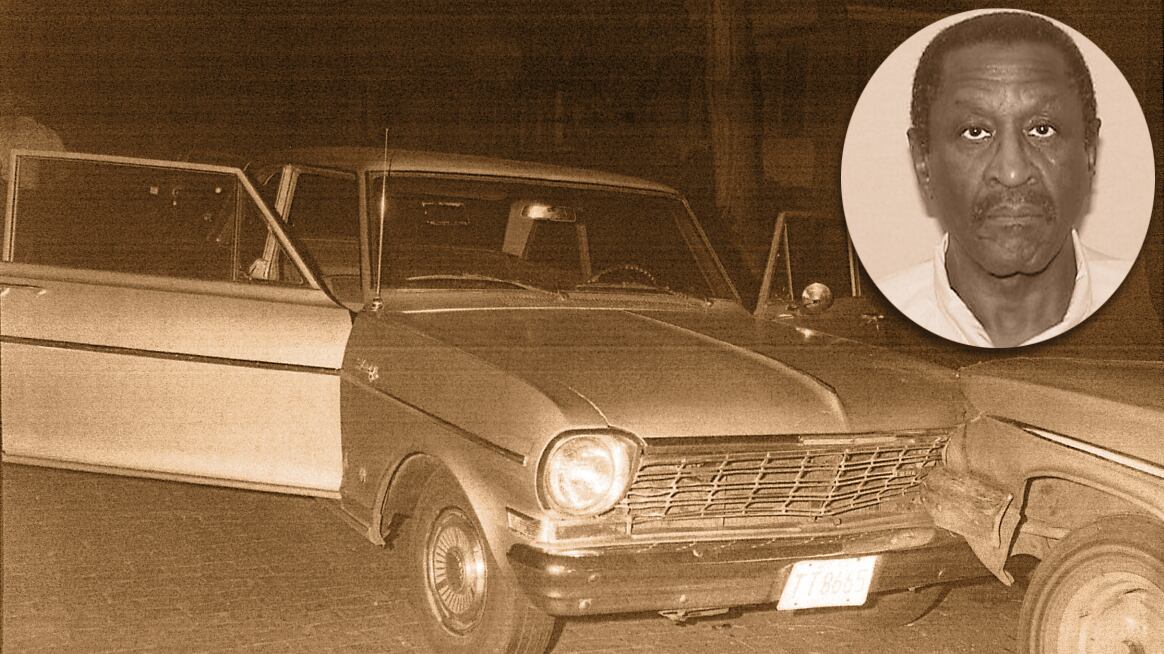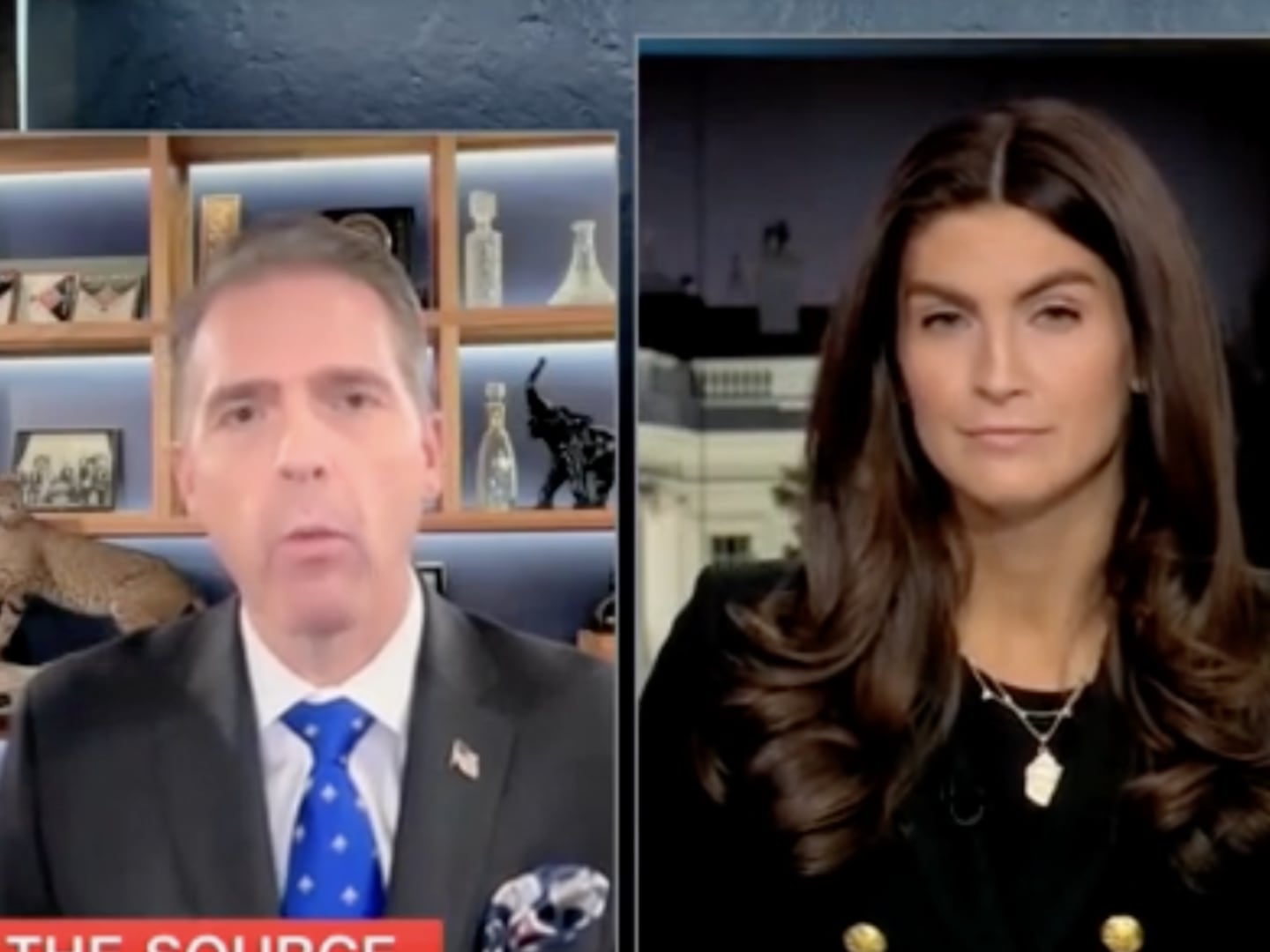Andrew Hale is used to defending cops, not cop-killers.
The Chicago attorney made his name defending police officers in high-profile misconduct cases, but now he’s fighting to free Cleve Heidelberg who is serving a 100-year prison sentence for the murder of an Illinois sheriff in 1970.
Hale came to Heidelberg’s defense after his former client, Alstory Simon, was freed from prison for a wrongful double murder conviction after he was coerced into confessing to the crime by a Northwestern University journalism project (as documented in 2014’s film, A Murder in the Park.)
Before he was released from prison in October 2014, he made a promise to his fellow prisoner, Heidelberg, that he would find him a lawyer to look into his case. Heidelberg has maintained his innocence ever since the day he was arrested, but his claims mostly fell on deaf ears until Hale came along.
They shouldn’t have.
***
At 1:00 a.m. on May 26, 1970 a man ran into a drive-in movie theater in Belleville, Illinois, just outside of Peoria. The man said it was a robbery and tied up the projectionist, then made the manager take him to the money at gunpoint.
“Little did he know the guy, the projectionist, untied himself and called the police,” Hale said.
When a Peoria County Sheriff car pulled up, the suspect fired three shots and fatally struck Deputy Ray Espinoza in the head. The suspect got back in a blue 1964 Chevy Nova II and took off for Peoria, with officers in hot pursuit. There was a crash and the suspect took off on foot into the night.
Officers didn’t have their suspect but they had his car—it was Heidelberg’s.
“Cleve Heidelberg got a call about 1:30 in the morning saying, ‘Your car got left at the intersection of Blaine and Butler in Peoria,’” Hale said.
Heidelberg matched the suspect’s description: young, male, and black.
When he came to retrieve his car, officers came rushing out, guns drawn.
“When I was arrested, I was down there inquiring about my vehicle, and as I was talking with one of the officers he asked me to step to the side of this house and next thing I know somebody hit me in the back of my head,” he said.
Several officers “beat the crap out of him,” Hale said. It only stopped when a husband and wife came out of their house and told them to stop. When Heidelberg became conscious again, he was on the ground in handcuffs.
“My inner question was why were they doing this to me, what have I done? The officers were really beating me up.”
Heidelberg was being arrested for murder.
“The officers told me that I was done because it was my car and my gun.” Heidelberg said. “I stopped them right there, I didn’t have no weapon. I didn’t own no weapon.”
When the police told him that all the evidence from the car had been sent to the Federal Bureau of Investigation’s crime lab in Washington, D.C., Heidelberg said he felt relieved.
“My heart took a good beat because my fingerprints weren’t on any weapon and when the physical evidence came back, it would prove my innocence,” he recalls thinking at the time. “I was highly confident that all that was alleged against me would be shown not to be so.”
After a trip to the hospital to get five stitches over his left eye from the beating, Heidelberg was taken to jail and put in a lineup. The drive-in manager, Mayme Manuel, was brought in to identify the robber, but Hale says it was fixed.
“You can’t have one guy beat up and three other normal guys in a lineup, that’s a suggestive lineup,” he said.
Peoria County Sheriff’s Officer Emanuel Manias wrote in his report that the manager identified Heidelberg as the robber. Now the state’s attorney had an eyewitness putting Heidelberg at the scene of the crime, Heidelberg’s car being used in the commission of the crime, and Heidelberg himself coming to retrieve his car after the crime.
“There was no evidence linking Heidelberg to the crime other than his car,” Hale said. “I think the police felt like since it was Heidelberg’s car, which it was, they thought, hey, we’ve got our guy, case solved.”
Heidelberg was charged with second-degree murder and an all-white jury was selected to determine his guilt despite the fact he was black.
Manuel, the drive-in manager who was held hostage, testified that she was unable to identify Heidelberg as the perp, even after being allowed to leave the witness stand and walk over to the table where he was sitting. But in his reports Officer Manias claimed she did identify Heidelberg.
“Officer Manias did a report that said she identified Heidelberg as the offender,” Hale said. “But that wasn’t true, because she testified at the trial that at the time of the lineup she did not identify anybody and could not identify anybody.”
Five officers testified in court that during the high-speed chase they were able to see the perpetrator and his blue shirt and gray coat. Four of those officers identified Heidelberg as the man they were chasing. (Hale recently filed court papers claiming that the transcript of police radio calls made during the pursuit have officers repeatedly describing the suspect as wearing a yellow shirt and brown jacket.)
The state’s attorney argued that all of Heidelberg’s bruises and the five stitches over his left eye were the result of Heidelberg crashing his car.
“The police went right to beating me, trying me, convicting me, and knocking me in the head.” Heidelberg said. “Punishing me for a crime I hadn’t done.”
Witnesses supported Heidelberg’s alibi that he was at some local clubs during the robbery and murder, but the jury didn’t buy it. Nor did they buy his claim that he’d loaned his car to a man named Lester Mason and was just retrieving it when cops started beating him.
“You’re innocent until proven guilty, but in my particular case that didn’t happen,” Heidelberg said. “The state’s attorney was dedicated to getting a conviction and a lot of things were ignored.”
Mason was prepared to testify to what he would later swear in an affidavit (PDF).
Mason said he was talking to a man named James Clark about “committing some stickups” on the night of the robbery and borrowed Heidelberg’s car. Clark got a gun from a mutual acquaintance, James Whitt, for the job. Mason drove himself and Clark to a bar where he got out and Clark took the car, supposedly to go back to Whitt’s home. Instead, Clark headed for the drive-in theater.
Around 1:30 a.m., Mason said, Clark called him at the bar.
“He said that things didn’t go right at the place he was trying to rob, and that he had to abandon Heidelberg’s car about 3 or 4 blocks on the other side of Whitt’s house, down by Lincoln Street,” Mason said in the affidavit. “Also, he told me that if I let it out, or told anyone that he was the one who had Heidelberg’s car that I would get hit.”
But the jury didn’t hear Mason’s side of the story and Heidelberg was convicted of murder on Dec. 15, 1970.
“I just think it’s an incredible case of injustice where this guy has been in prison for 45 years for something somebody else did,” Hale said. “But because he was, you know, a poor black guy in 1970 accused of killing a white officer he didn’t have a voice. Cleve was put in a very difficult spot and I think there was enormous pressure on those jurors, an all-white jury.”
Mason’s sworn affidavit was submitted as evidence during the sentencing phase of the trial but a judge ordered Heidelberg to rot in prison for the next century.
When Heidelberg was in prison, he met Clark.
“I was sent to Illinois State Penitentiary at Joliet, Illinois in January of 1971 and had the occasion to see Cleve Heidelberg,” Clark said in an affidavit he signed on Oct. 25, 1971. “But I didn’t get the chance to speak with him personally, I did communicate with him thru a friend. I informed Cleve that I was thinking about writing the Judge of his trial or the authorities and let them know what really happened May 26 and how things occurred surround the death of Espinoza.”
On Feb. 15, 1971 The Peoria Journal Star reported that an affidavit from Clark admitting guilt to the cop killing was mailed to the court. In the article Clark is quoted as saying, “Cleve Heidelberg Jr. is innocent of the crime. I am the man who killed Sgt. Espinoza.”
Despite the newspaper article and affidavit, Heidelberg remained in prison.
“I think they were too embarrassed to say a mistake could have been made and I don’t think they cared,” Hale said. “I just think they felt like we’ve got a guy, the case is solved, let’s just let it be.”
Clark is deceased, but his brother Matt Clark has also signed an affidavit confirming that his brother confessed to him about the murder. (Matt and James are brothers of Mark Clark, the Black Panther who was killed with Panther leader Fred Hampton by Chicago police in December 1969.)
“Matt Clark told me that his brother confessed to doing it, and in fact James Clark just died last summer,” Hale said. “When I started digging into this I was about a month too late.”
Heidelberg appealed his case in the Illinois courts and petitioned a federal district court, each time claiming that the evidence that would clear him was suppressed. Even claiming that it was a figment of Cleve’s imagination.
“In the Appellate Courts of the State of Illinois, they looked at the case and said that I was imagining that this evidence existed, because it had been certified at the trial that there was no fingerprint evidence,” Heidelberg said. “They were saying this issue was already dealt with. I was up there in the federal court complaining about evidence that they said didn’t exist.”
But Heidelberg knew the fingerprint evidence existed because the arresting officers told him it was sent to the FBI lab. He’d been trying to track it down all these years and now with the help of Hale he felt they could finally get it.
“What Hale started doing was filing Freedom of Information [Act] requests to the Peoria State’s Attorney, to the sheriff of Peoria County, to the Federal Bureau of Investigation trying to see where those fingerprints were at,” Heidelberg said.
“This was a major murder case and the evidence was so important because it was found right there in my car. A sheriff investigator flew the physical evidence to the FBI for testing to look at all of the latent fingerprints they took off of this weapon and compare those with mine. On June 5 [1970], that testing was completed, and a letter was allegedly sent back to the sheriff of the county certifying that none of those prints matched mine.”
Hale said he hired investigators to dig through government archives in Washington—and they discovered the vital fingerprint evidence had been destroyed in July 1995 at the FBI archives.
What they found was a report on the evidence, though.
“The report documenting the results of that further testing was destroyed,” Hale said, “but we discovered an FBI index card stating those results were ‘negative’ for a match which leads us to conclude that someone else’s prints, namely James Clark’s, the confessed killer, were found on at least the other items and perhaps on the weapon itself.”
Heildeberg called the discovery nothing less than divine.
“It was a miracle that this evidence was found,” he said. “We’re struggling to get me out before I expire in this penitentiary. It’s like a grinding pain. How can you explain it, when you wake up in the morning and there’s that sense of hopelessness and despair? But you’ve got to get yourself up out of the bed, even if it’s a struggle getting up to face another day, and do the things that I have to do to regain my freedom.”
The prosecutor from the original case and a retired police officer maintain Heidelberg is guilty, but Hale has filed a motion together with the NAACP for a special prosecutor to review the case.
Peoria County State’s Attorney Jerry Brady is attempting to block the motion, denying that his office has a conflict of interest in the decades-old case. A hearing is scheduled for July 28 to determine if a special prosecutor will be appointed. If he is and finds there is sufficient evidence to reopen the case, then it will be the first step toward Heidelberg’s potential exoneration.






